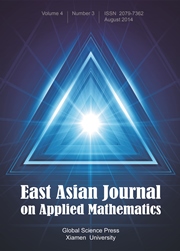Article contents
Comparison of Spectral and Wavelet Estimators of Transfer Function for Linear Systems
Published online by Cambridge University Press: 28 May 2015
Abstract
We compare spectral and wavelet estimators of the response amplitude operator (RAO) of a linear system, with various input signals and added noise scenarios. The comparison is based on a model of a heaving buoy wave energy device (HBWED), which oscillates vertically as a single mode of vibration linear system. HBWEDs and other single degree of freedom wave energy devices such as oscillating wave surge convertors (OWSC) are currently deployed in the ocean, making such devices important systems to both model and analyse in some detail. The results of the comparison relate to any linear system. It was found that the wavelet estimator of the RAO offers no advantage over the spectral estimators if both input and response time series data are noise free and long time series are available. If there is noise on only the response time series, only the wavelet estimator or the spectral estimator that uses the cross-spectrum of the input and response signals in the numerator should be used. For the case of noise on only the input time series, only the spectral estimator that uses the cross-spectrum in the denominator gives a sensible estimate of the RAO. If both the input and response signals are corrupted with noise, a modification to both the input and response spectrum estimates can provide a good estimator of the RAO. A combination of wavelet and spectral methods is introduced as an alternative RAO estimator. The conclusions apply for autoregressive emulators of sea surface elevation, impulse, and pseudorandom binary sequences (PRBS) inputs. However, a wavelet estimator is needed in the special case of a chirp input where the signal has a continuously varying frequency.
Keywords
- Type
- Research Article
- Information
- Copyright
- Copyright © Global-Science Press 2012
References
- 3
- Cited by


